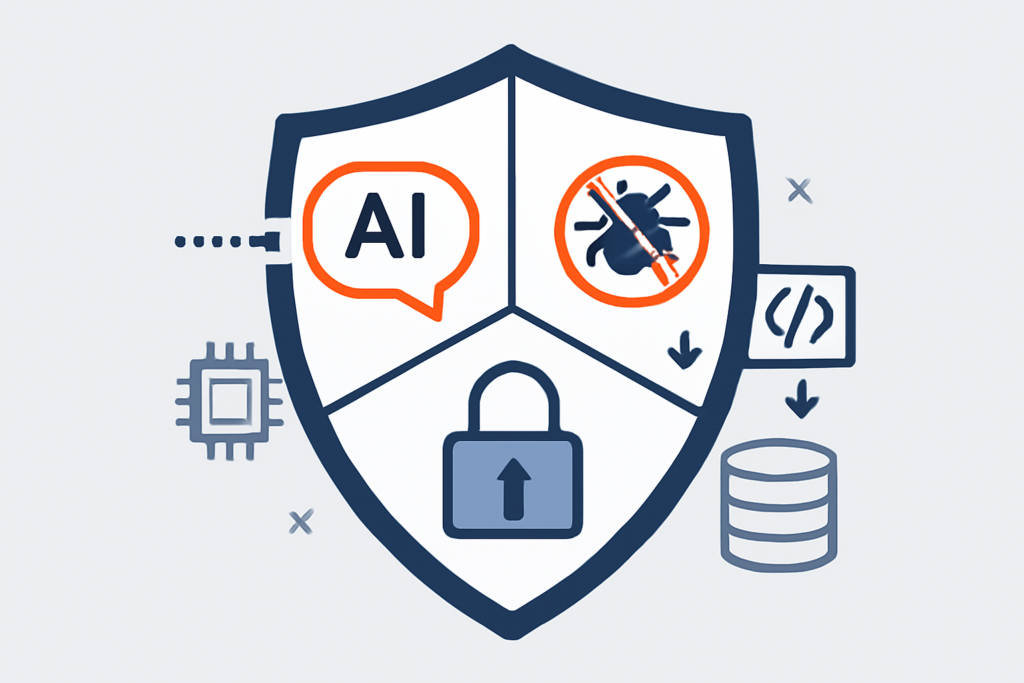AI security vulnerabilities are among the most concerning topics in today’s rapidly evolving digital ecosystem. This article dives deep into the deadly flaws, including the ClickFix prompt injection vulnerability, providing detailed case studies and exclusive insights to help you swiftly master defense techniques and build a robust AI security shield.
—
In the fast-paced artificial intelligence field, AI summarization security has repeatedly suffered attacks, especially represented by ClickFix prompt injection vulnerabilities that threaten the entire data security system. Addressing these AI security flaws is urgent and crucial to safeguard information security. This article offers an in-depth interpretation of these hidden yet fatal attack vectors, explained in an accessible manner to eliminate defense blind spots.
—
## In-Depth Analysis of AI Security Vulnerabilities: How ClickFix Prompt Injection Destroys AI Summarization Security 🔍
ClickFix prompt injection is a typical AI security vulnerability that allows attackers to infiltrate the AI summary context via carefully crafted “prompts,” hijacking the AI’s reasoning logic to output summaries containing malicious code or phishing links.
Unlike traditional code injection, this vulnerability transcends context security boundaries such as text summaries, task instructions, and human-computer interaction contexts, turning AI systems into attack vectors. Attackers exploit the ambiguity and polysemy of natural language to create misleading prompts that lure AI models to output content with security risks.
This reveals a weak spot in current AI summary security defense mechanisms: most systems lack strict input prompt validation and clear contextual trust boundaries, allowing hackers to easily insert malicious information chains.
To address this, security defense systems must upgrade, introducing multi-level prompt monitoring and dynamic adaptive trust evaluation, combined with behavior analysis and anomaly detection tools to spot clues of prompt injection attacks and block risks at the source.
—
## Deadly Threat! Complete Exposure of Malware Camouflage and AI Summary Delivery Traps 🕵️♂️
As hacking tools become smarter, malware camouflage has evolved with new “paths,” and AI summaries have become their “perfect springboard.” Using vulnerabilities like ClickFix, attackers can have AI “auto-broadcast” malicious links or attachments disguised as normal content, achieving precise delivery.
The principle is that AI-generated content is highly credible; users tend to lower their guard. Furthermore, the natural and smooth language style makes it extremely difficult for traditional antivirus and anti-phishing systems to detect.
In actual information security auditing and monitoring deployment, many security teams have found AI summary delivery-based malware attacks to be highly concealed, behaviorally complex, and frequently mutated, making timely blocking hard for common defense systems.
Recommended comprehensive monitoring methods include:
– Using natural language processing models to detect abnormal contextual associations
– Introducing multimodal data sources (e.g., IP reputation, file hashes) for supportive judgment
– Building AI summary content safety whitelists and blacklists
Only through these means can a strong security bridge be built between third-party AI services and traditional defenses.
—
## Catastrophic Leakage! The Ultimate Data Risks Behind Induced Links ⚠️
Induced link attack models rely mainly on AI systems generating summaries containing inducive click links, which may point to phishing sites, malicious download pages, or data theft carriers, putting victim enterprises and users at huge information leakage risks.
ClickFix prompt injection enables attackers to embed these links seamlessly, bypassing multiple layers of text filtering mechanisms. These data security weaknesses typically reside near the end of the data processing pipeline or the endpoint users access summaries.
Facing this ultimate hazard, information security response and isolation processes are vital. Upon detecting suspicious links, access must be immediately cut, emergency responses activated, related logs audited, attack sources tracked, and affected range and data thoroughly inspected.
Bank industry phishing site handling models can be referenced to swiftly identify and report risks and leverage cross-industry intelligence sharing to enhance defenses.
—
## Collapse Risk! Contextual Security Failure Triggers AI Cascade Explosions 🚨
Once AI summarization context security mechanisms fail, the attack chain rapidly expands. For example, attackers use automated tools combined with ClickFix vulnerabilities to simultaneously attack multiple systems, causing disaster chain reactions.
This attack chain integration showcases hacker groups’ coordinated combat capabilities. They remotely control scripts and automate social engineering and phishing attacks.
Information security situational awareness platforms thus play a key role. By integrating multi-source web data for real-time alerts and anomaly detection, damage can be minimized.
Security awareness training must be enhanced to improve the perception of contextual risks across key roles, establishing multi-level response mechanisms to prevent “avalanche-like” collapse.
—
## Desperate Counterattack! Top 3 Best Practices for AI Security Vulnerability Repair and Hardening 🛡️
Rebuilding AI summary information security defenses relies on timely and accurate vulnerability repair and security hardening. Below are best practices from experienced security experts:
| Repair Measure | Specific Operation | Expected Outcome |
|—————————–|———————————————————–|——————————–|
| Strict input prompt validation| Filter abnormal prompt fields using semantic analysis and rule engines | Block malicious injections, strengthening context security boundaries |
| Dynamic trust adjustment model| Adjust prompt weights in real-time based on historical behavior and context | Reduce risk of misleading content output |
| Multimodal content and link verification| Combine URL security checks, file behavior monitoring, and user interaction audits| Early detection of malicious inducive links |
Additionally, continuous monitoring of AI system metrics combined with threat intelligence updates helps prevent second exploitation of vulnerabilities.
In the future, as AI and security technology integration deepens, innovative defense models such as federated learning security and multiparty secure computation will become mainstream, further enhancing information security resilience.
—
## AI Security Vulnerabilities FAQ 🤔
**Why is the ClickFix prompt injection vulnerability so dangerous?**
It breaches AI model’s standard input limits, disguising malicious commands to induce infected outputs, directly threatening information security.
**How to detect if AI summaries have been maliciously prompt-injected?**
Use contextual consistency checks, anomalous language pattern analysis, and external URL and attachment security screening.
**How can enterprises respond rapidly to inducive link attacks?**
Immediately block related URLs, investigate affected users, enable multi-layer protection filters, and alert employees to stay vigilant.
**Can ordinary security software defend against such AI security vulnerabilities?**
Traditional antivirus alone is insufficient; combined AI security monitoring tools and anomaly behavior analysis are needed.
**Are AI security vulnerabilities only fixable through technical means?**
Not only technology; strengthening security management and education training to raise overall security awareness for collaborative defense is crucial.
**What is the future direction of AI security?**
It will integrate precise content safety models, automated defense platforms, and innovative security protocols to achieve smarter threat awareness and response.
—
## Conclusion
Faced with the increasingly severe threat of AI security vulnerabilities, especially the chain reactions caused by ClickFix prompt injection, building a solid defense system is imperative. Remembering the above analyses and suggestions can effectively prevent lurking malicious attacks and strengthen your enterprise information security.
Want professional teams to help you enhance AI security protection effectiveness and safeguard data assets? Visit [De-Line Information Technology](https://www.de-line.net) now to explore our comprehensive AI security vulnerability solutions and start a secure and worry-free intelligent future! 🔐
—
*References: Extracted from “Artificial Intelligence Security Threat Report 2024” ([link](https://example.com/aisafetyreport2024)).*
************
The above content is provided by our AI automation poster




